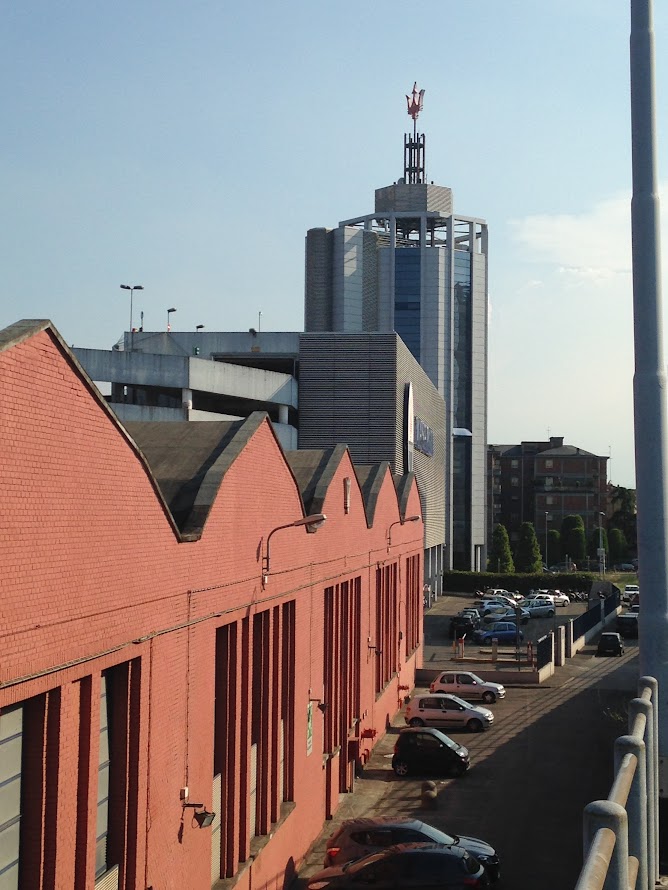
Visiting the Maserati factory in Modena is a dream come true for car enthusiasts and lovers of Italian craftsmanship. This northern Italian city, nestled in the heart of the Emilia-Romagna region, is not only known for its rich cultural heritage but also as a hub for luxury automobiles. Modena is home to the Maserati headquarters and factory, where some of the world’s most iconic cars are designed, manufactured, and tested. If you’re planning a visit, here’s everything you need to know about how to visit Maserati in Modena, including a bonus stop at the Umberto Panini Maserati Collection, a must-see for anyone interested in Maserati’s legacy.
Maserati Factory Tour: The Essentials
Located on Viale Ciro Menotti 322, 41121 Modena, the Maserati factory has been the heart of the brand for over 80 years. This historic plant produces Maserati’s flagship models, such as the MC20, and showcases the company’s unique blend of heritage and innovation.
The Maserati Factory Tour offers a behind-the-scenes look at the production process of these iconic vehicles. The tour, which lasts approximately 90 minutes, includes an introduction to the history of Maserati, a visit to the powertrain department, and an exploration of the car assembly line. You’ll also have the chance to visit the Maserati showroom, where you can see the latest models up close, including the MC20, the GranTurismo, and the Levante.
Tours are available Monday to Friday, typically between 9:00 AM and 3:30 PM, and they are offered in multiple languages, including English, Italian, French, German, and Spanish(Maserati USA)(Italiano). Reservations are required, and it’s recommended to book your tour at least a week in advance through the Modenatur website or by contacting Maserati directly. Keep in mind that the factory tour is not suitable for children under the age of 18, and photography is only allowed in the showroom, not on the production floor(Maserati USA)(Italiano).
The Maserati Showroom Experience
For those short on time, Maserati offers a shorter showroom tour, which lasts about 40 minutes. This tour includes a walk-through of Maserati’s current model range, showcasing the brand’s elegant designs and cutting-edge technology. Visitors will also receive a brief introduction to Maserati’s over-a-century-old history, with expert guides explaining the brand’s journey from its founding in 1914 to its modern-day innovations(Maserati USA).
After the tour, you can browse through the Maserati Store, where you can purchase official merchandise, including everything from Maserati-branded clothing to scale models of their cars. This is the perfect place to pick up a souvenir from your visit(Maserati USA)(Me With My Suitcase).
How to Get There
Modena is well connected by road, rail, and air. If you’re driving, take the A1 highway and exit at Modena Nord, following signs to the Maserati factory. Modena’s train station is just a short drive from the factory, making it easy to reach by taxi or public transportation. If you’re flying into Italy, the nearest major airport is Bologna Guglielmo Marconi Airport, which is about a 40-minute drive from Modena(Car Glass Advisor).
Bonus Visit: The Umberto Panini Maserati Collection
No visit to Modena is complete without stopping by the Umberto Panini Motor Museum, home to one of the most complete collections of Maserati cars in the world. Located at the Hombre Farm, just outside Modena, this private museum houses 19 of Maserati’s most iconic models, lovingly curated by the Panini family. The collection includes some of the brand’s most historically significant vehicles, such as the Maserati 250F, which was driven by Juan Manuel Fangio to victory in the 1957 Formula One World Championship, and the Maserati Birdcage Tipo 61, a marvel of lightweight engineering(Panini Motor Museum)(NUVO).
The museum itself is housed in a building designed to resemble an old railway station, adding to the charm and uniqueness of the experience. In addition to the Maserati cars, the museum also features vintage motorcycles, bicycles, and other rare vehicles, all meticulously maintained by the Panini family. The museum is free to visit, but appointments are required, especially for groups(Automuseums.info).
Visitors to the Hombre Farm can also take part in a tour of the farm’s Parmigiano-Reggiano production facilities. The Panini family is renowned for producing some of the best Parmigiano-Reggiano in Italy, and a combined tour of the cheese factory and Maserati museum is a perfect way to spend a morning in Modena(NUVO)(Tickets ‘n Tour).
Practical Information for Visiting
- Maserati Factory Tours: Monday to Friday, 9:00 AM – 3:30 PM. Pre-booking is required via Modenatur or Maserati’s website. Tours last about 90 minutes.
- Maserati Showroom Tour: A shorter, 40-minute experience focused on the latest models and Maserati’s history.
- Umberto Panini Maserati Collection: Open Monday to Friday from 9:00 AM to 12:30 PM and 2:30 PM to 6:00 PM. Appointments are required. The farm is located at Via Corletto Sud 320, 41100 Modena(Panini Motor Museum)(Motor Valley ).
Conclusion
Visiting Maserati in Modena offers a rare glimpse into the world of luxury automotive craftsmanship. From the bustling production lines to the tranquil Panini farm, where the brand’s history is preserved in stunning detail, this experience is a must for any car enthusiast. Whether you’re exploring the latest Maserati models in the showroom or admiring vintage racing cars at the Panini collection, a trip to Modena will leave you with a deeper appreciation for Maserati’s legacy of elegance, performance, and innovation.

